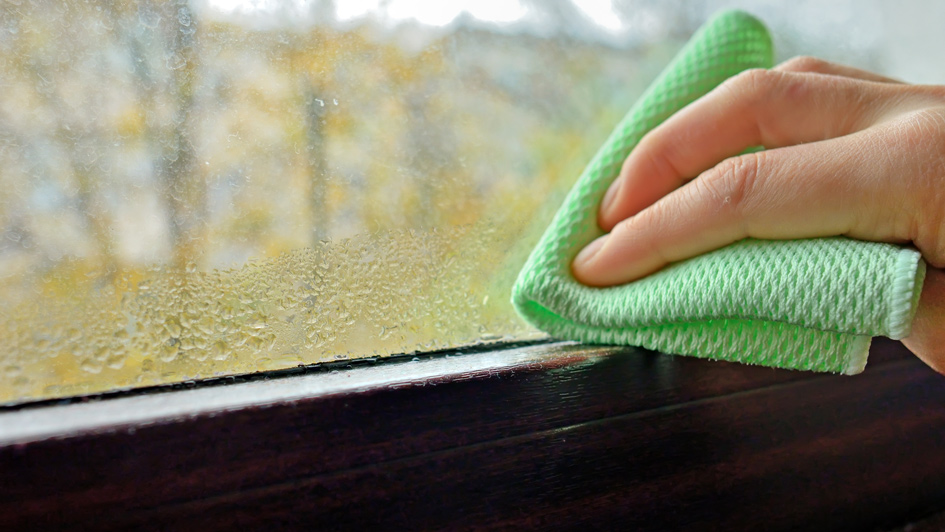
The windows in your home are a gateway to the outdoors, a way to let light in while you enjoy the view of your garden, yard or scenery. The last thing you want to see is a sweaty window covered in a layer of condensation.
Not only are windows plastered with condensation unsightly, they also can be a sign of a more serious air-quality deficit throughout your home. Thankfully, there’s multiple things you can do to address the problem.
What Causes Sweating in Windows
Condensation on the interior of windows is produced by the moist warm air in your home hitting the colder surface of your windows. It’s especially commonplace over the winter when it’s much cooler outside than it is within your home.
Inside Moisture vs. In Between Panes
When dealing with condensation, it’s necessary to recognize the difference between moisture on the inside of your windows in comparison to moisture in between the windowpanes. One is an air-quality issue and the other is a window issue.
- Moisture on the inside of a window is created from the warm humid air in your home forming against the glass.
- Any moisture you notice between windowpanes is caused when the window seal fails and moisture seeps between the two panes of glass, in which case the window needs to be repaired or replaced.
- Condensation in the windows isn’t a window issue and can instead be solved by adjusting the humidity across your home. Different things cause humidity throughout a home, like showers, cooking, laundry or even breathing.
Why Sweating Windows Could Mean an Issue
Though you might think condensation in your windows is a cosmetic issue, it could also be a sign your home has higher humidity. If this is in fact the case, water may also be collecting on window frames, cold walls or other surfaces. Even a thin film of water can cause wood surfaces to mildew or rot over time, increasing the growth of mildew or mold.
How to Decrease Humidity in Your Home
Not to worry, because there are several options for eliminating moisture from the air in your home.
If you have a humidifier operating within your home – whether it be a small-scale unit or a whole-house humidifier – lower it further so the humidity inside your home decreases.
If you don’t have a humidifier going and your home’s humidity level is higher than you prefer, think about purchasing a dehumidifier. While humidifiers introduces moisture into your home so the air doesn’t get too dry, a dehumidifier pulls excess moisture out of the air.
Small, portable dehumidifiers can absorb the water from an entire room. However, those units require emptying out water trays and most often service a small area. A whole-house dehumidifier will eliminate moisture from your entire home.
Whole-house dehumidifier systems are controlled by a humidistat, which allows you to establish a humidity level precisely like you would choose a temperature on your thermostat. The unit will start automatically when the humidity level surpasses the set level. These systems coordinate with your home’s HVAC system, so you should contact skilled professionals for whole-house dehumidifier installation Elk River.
Other Ways to Decrease Condensation on Windows
- Exhaust fans. Installing exhaust fans around humidity hotspots such as the bathroom, laundry room or above the oven can help by pulling the warm, moist air from these spaces out of your home before it can raise the humidity level throughout your home.
- Ceiling fans. Turning on ceiling fans can also keep air swirling throughout the home so humid air doesn’t get caught up in one place.
- Opening up window treatments. Pulling open the blinds or drapes can reduce condensation by preventing the warm air from being caught against the windowpane.
By reducing humidity in your home and circulating air throughout your home, you can enjoy clear, moisture-free windows even during the winter.

